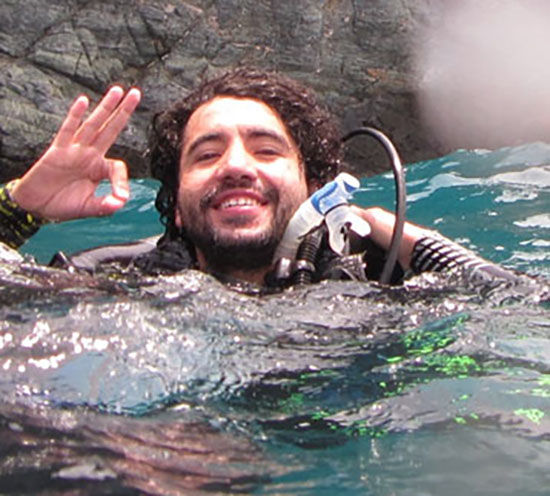I am a biologist graduated from the Universidad Industrial de Santander in Bucaramanga, Colombia (2007), with a Master’s degree in Earth Sciences from the University of Salamanca, Spain (2012), and a PhD in Geology from the same university (2024). During my master’s degree I delved into the study of Miocene marine diatoms from outcrops on the Colombian Pacific coast. My doctoral research focused on Cenozoic palynology in the Colombian Caribbean and the proposal of a new palynological zonation for the northwesternmost part of South America. My career as a palynologist started at Ecopetrol-ICP in 2007. As an expert palynologist (more than 15 years of experience), I am affiliated to the Instituto de Investigaciones en Estratigrafía – IIES of the Universidad de Caldas since 2010, where I intermittently teach courses on palynology and sedimentary organic matter to undergraduate and graduate students. My experience lies mainly in the interpretation of palynostratigraphy and palynofacies in several Colombian basins and other Neotropical regions, from the Cretaceous to the Neogene. Over the years, I have received extensive training in biostratigraphy with a focus on palynology (pollen, spores and cysts of dinoflagellates), marine diatoms, palaeoecology, palynofacies analysis and organic geochemistry applied to the hydrocarbon industry. Over the last decade, I have actively participated in projects with both public and private entities, contributing my experience to various efforts to understand the geological evolution of the country. Currently, I am studying the palynology of the Neogene in the Amazon Basin in order to understand changes in vegetation associated with climatic dynamics.
Research: The Cenozoic palynology of the Colombian Caribbean (NW South America)
In Colombia, palynology emerged in the 1950s, closely intertwined with the interests of the hydrocarbon industry and the need for comprehension of geological evolution. Despite the presence of a considerable number of palynological publications (approximately 111 articles published), most of them are concentrated in areas associated with petroleum exploration. Nonetheless, much of this valuable data remains undisclosed due to the industry’s inherent confidentiality, leading to restricted or limited information in certain regions of the country. Within the Colombian Caribbean region, the Sinú-San Jacinto Basin (SSJB) has emerged as a frontier basin, undergoing extensive study over the past decade. This presents a unique opportunity to bridge the knowledge gap in this particular area. Collaboratively, Universidad de Caldas (via IIES), in partnership with the National Hydrocarbon Agency (ANH) and the Ministry of Science and Technology of Colombia (Minciencias), has developed a program facilitating the publication of a significant quantity of data acquired in the last decade. My PhD project provides an overarching view of palynology, establishing for the first time a palynostratigraphic zonation scheme for the Cenozoic in this region, based on a composite section of 14 cores drilled from the SSJB. Our palynological findings were cross-referenced with other studies conducted in the northern area of South America and Colombia, leading to the proposal of twelve palynological zones spanning from the Late Paleocene to the Pleistocene and calibrated with calcareous microfossils. Some particular findings were: 1) The first report of a Paleocene palynological assemblage for this part of the basin. 2) The record of the variations in the biostratigraphic ranges of certain palynomorphs as well as the description of new species with biostratigraphic value, 3) the documentation of high diversity and abundance of dinoflagellate cysts in specific stratigraphic intervals which require a more detailed study, and 4) the identification of reworking in select stratigraphic intervals, underscoring the importance of scrutinizing the last appearance record of microfossils in exploration and geologic mapping. Lastly, the concurrent examination of calcareous nannofossils and planktonic foraminifera has facilitated an independent calibration of the palynomorph assemblages to the international chronostratigraphic chart.










